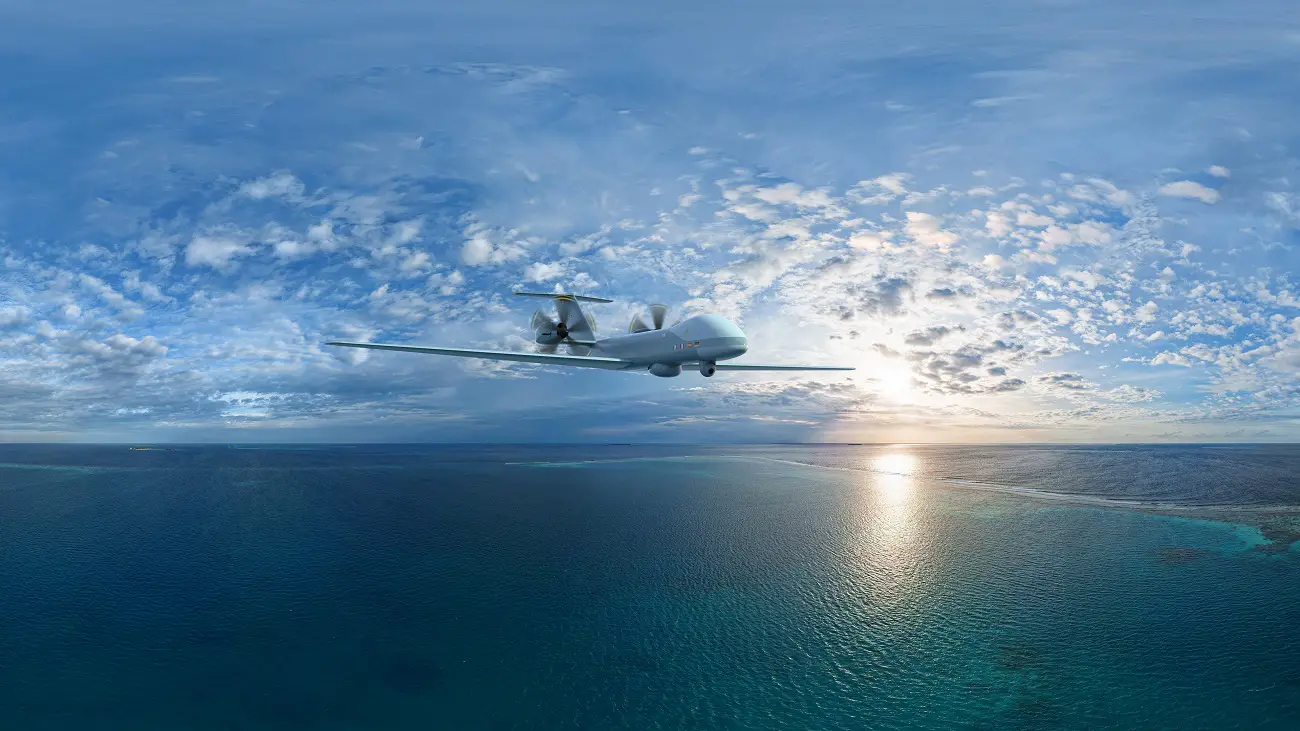The Eurodrone programme has successfully performed the Preliminary Design Review (PDR). Led by Airbus Defence and Space as prime contractor, this major programme milestone has been completed with OCCAR and representatives of the four customer nations (France, Germany, Italy and Spain) in the presence of the three Major Sub-Contractors (MSC), Airbus Defence and Space Spain, Dassault Aviation and Leonardo. The PDR proves that the initial design of the aircraft has consistently matured, paving the way to proceed with the detailed design. It is the outcome of different technical assessments and evaluations conducted, such as Wind Tunnel Testing to confirm the aerodynamic configuration of Eurodrone, the overall design to ensure demonstration of operational capability, and the validation of a fully representative Digital Twin. From the very beginning, the Eurodrone programme benefits from both design philosophies – physical and digital.
“Performing the Preliminary Design Review for the development of Eurodrone represents an important step forward for this key European defence programme”, said Jean-Brice Dumont, Head of Air Power at Airbus Defence and Space. “It shows a real joint effort and collaborative spirit from all industrial partners and the Customer community to ensure European sovereignty and independence in this critical segment of unmanned long endurance ISTAR capability.”
The European Medium Altitude Long Endurance Remotely Piloted Aircraft System (MALE RPAS), or Eurodrone, is a twin-turboprop MALE UAV under development by Airbus, Dassault Aviation and Leonardo for Germany, France, Italy and Spain, with a first flight expected by mid-2027. Supported by and based on the knowledge already gathered, the Eurodrone programme enters into a new phase to reach the Critical Design Review (CDR), which will represent the final step and closure of architecture and system design. Provided with innovative cutting-edge technology and designed to become one of the main pillars of any future combat air system, the Eurodrone will be an indispensable capability to facilitate international conflict prevention and crisis management, ensuring operational superiority to the nations, especially in the context of Intelligence, Surveillance, Target Acquisition and Reconnaissance (ISTAR) missions.
Missions targeted are long endurance intelligence, surveillance and reconnaissance and ground support with precision-guided weapons. The twin-turboprops are mounted in a pusher configuration behind the wing, similar to the smaller BAE Systems Mantis, and one-third larger than the MQ-9. The drone’s dual engines were a demand of Germany, which intended to use the UAV for surveillance over domestic urban areas and was concerned that an engine failure in a single-engine drone could lead to the drone crashing into a house. France, which intends to use the system over conflict zones such as the Sahel, has been critical of its cost and weight. At 11,000 kg (24,000 lb), it is over twice as heavy as an MQ-9 Reaper. A French politician overseeing the RPAS project, Christian Cambon, criticized it as suffering from “obesity.”















